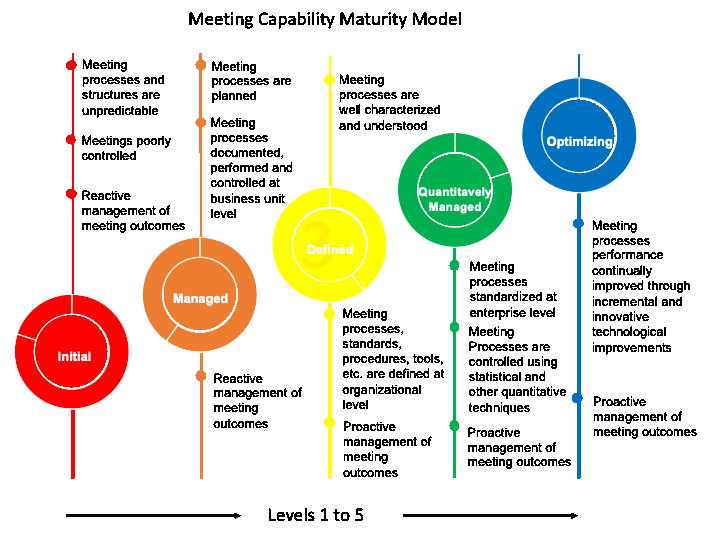In this unprecedented time that we currently find ourselves in, there is one thing that stands out like a sore thumb; a large number of world countries’ health care systems were not ready to deal with the crisis that is the result of the Black Swan[1] Health Risk event. This risk has been identified over 10 years ago, but still most countries had to scramble around for resources and redirect budgets to increase their state of readiness of actually state of response. This is now a total re-active response and not proactive as one would expect to have in a known risk response situation.
As most health care capabilities are seriously lacking, there is at least one other area where countries and the organisations around the world is falling short in terms of their readiness to deal with this unprecedented situation. Organisations were forced to instantly move to a model where almost everyone has to work remotely without the normal interpersonal interactions and face to face discussions and meetings. It is in this area where I have been observing a large numbers of people at all levels in organisations over the past 8 weeks, and almost without exception everyone echoes the same experience – everything moves SO MUCH slower. It takes longer to get everything done because we have to get everything planned and executed through some version of online meetings.
So the question begs: “Why are we so inefficient when we have to work completely remotely”?
It goes without saying that the answer to this question is extremely complex, but there are a number of cracks that are now becoming very clear. I believe that this highlights a similar lack of readiness or maturity in our capability to function through meetings.
Natural Mode of Communication
In 1971, a researcher and author published a book about nonverbal gestures and the percentage of communication that is nonverbal. This expert, Albert Mehrabian, asserted that around 55% of communication is body language, 38% is voice tone, and a mere 7% is actual speech and spoken words.
Since that time, researchers that continue to explore the realm of nonverbal communication believe that the numbers may actually be higher than that and that over 90% of all communication is body language- including the way that you smile, laugh, stand, walk- all nonverbal mannerisms and behaviours.
Silence is another challenge. Silence creates a natural rhythm in a real-life conversation. However, when it happens in a video call, you became anxious about the technology. It also makes people uncomfortable.
Even if the research numbers are not absolute correct; it goes without saying that a significant part of our natural method of communication is non-verbal.
The only thing worse than a long presentation in person is a long presentation during a virtual meeting. The person leading the meeting should prioritise conversation between participants rather than speechifying, and should be careful to include everyone.
Meeting remotely means going without the social and physical cues that set the rules for in-person meetings; in practice, this means participants in virtual meetings are more likely to talk over one another, or to not speak much at all. Calling on people to speak in turn is one way around this.
Meeting Capability Maturity
To meet or not to meet?
Will a phone call or email be sufficient for your purpose or do you need to schedule a meeting to reach your outcome?
Meetings are meant to be an engine of productivity in the workplace. Unfortunately, these days, meetings are labelled as a waste of time and companies are avoiding having them as much as possible. It usually comes down to “bad” culture/habits in organisations when it comes to meetings.
Globally, there are hundreds of millions of meetings taking place daily. Research shows that an average of 37% of professional’s and up to 70% of senior management's time are spent in meetings. Organisations consider more than 67% of all meetings to be failures. Billions of dollars per year are lost on unproductive and unnecessary meetings.
Through our research we established that there are only a small number of valid reasons for having a meeting:
Team Building
Solving complex problems
Confirmation of decisions
Manage risk and actions to drive productivity within teams
Conducting effective meetings is a capability[2] like effectively managing teams or managing delivery of projects. It is therefore important to firstly be able to measure your meeting capability maturity.

Our research and experience in this field leads us to the conclusion that this capability maturity takes into account standardised governance and processes which should be implemented through rules (procedures) that results in more effective meetings.
If embedded within a team or organisation it will ultimately lead to a healthy meeting culture that embeds these best practice principles:
Focus on purpose and predefined outcomes.
Every meeting should be defined with a clear objective and expected outcomes.
Define the required attendees, key attendees and roles - unnecessary attendees must be excluded from meetings.
Define actions to ensure that every meeting attendee is highly prepared by the time he/she joins the meeting.
Define actions resulting from the meeting and ensure these are assigned to a responsible individual (these actions must also be actively tracked/managed to completion).
Confirm decisions in meeting that have been tabled for that specific meeting. Decisions must be discussed and individualconclusions/decisions must be reached outside/before meetings.
We firmly believe by embedding these best meeting practices that the virtual meetings will be more effective and will eliminate the unnecessary time “wasting” that has become the norm.
1. Black Swan Risk – an unpredictable or unforeseen event, typically one where the impact is extremely high but the probability for such an event is extremely low. In the unlikely situation when such an event occurs – it results in extreme consequences.
2. Capability – Business capability is the expression or the articulation of the capacity, materials and expertise an organisation needs in order to perform core functions.
